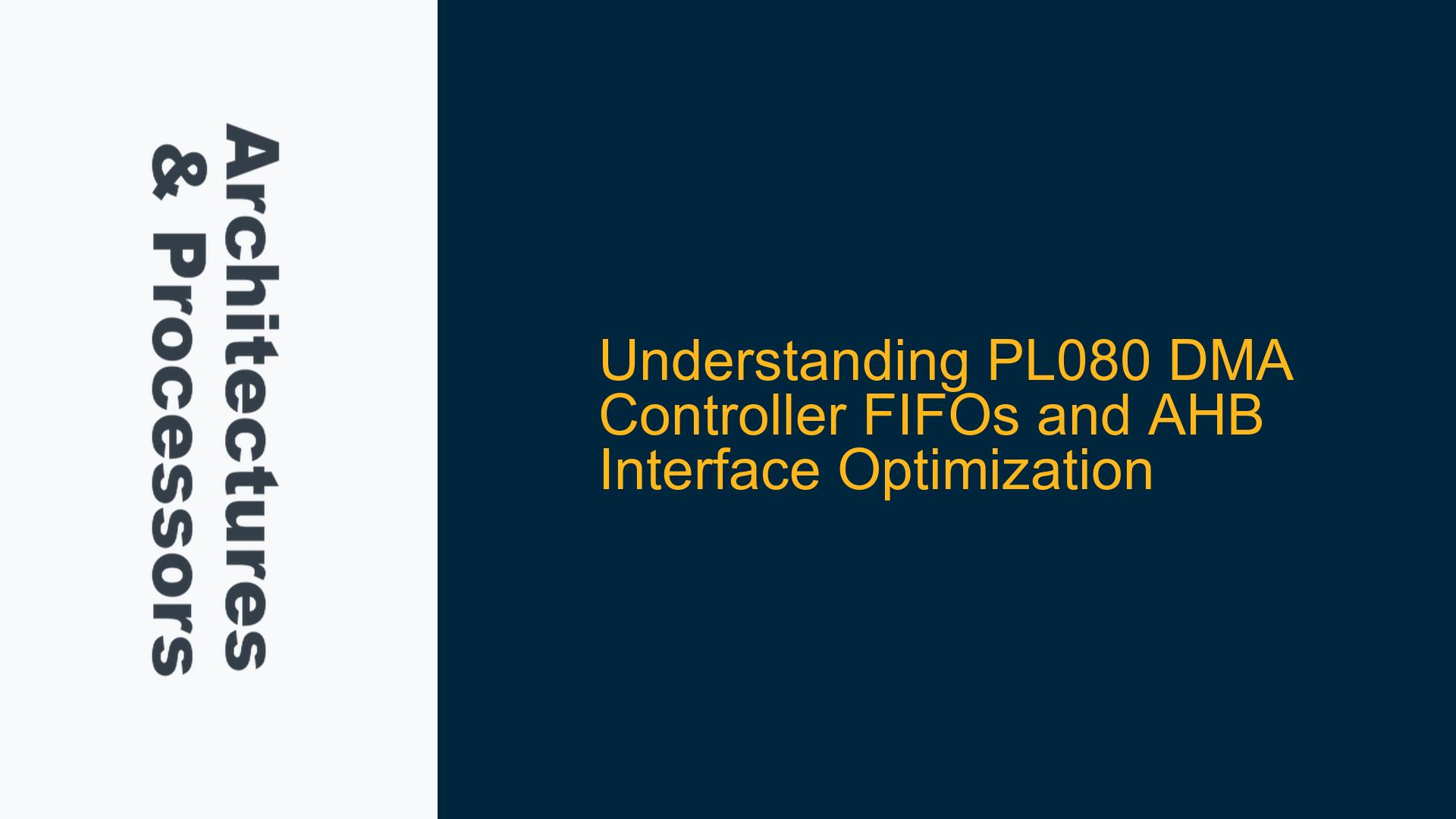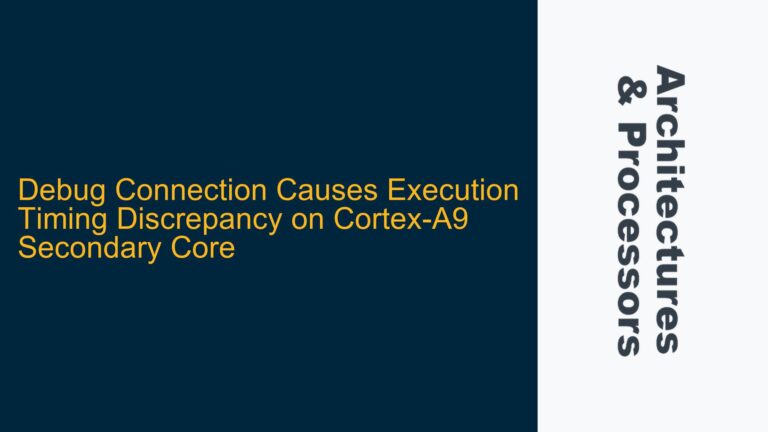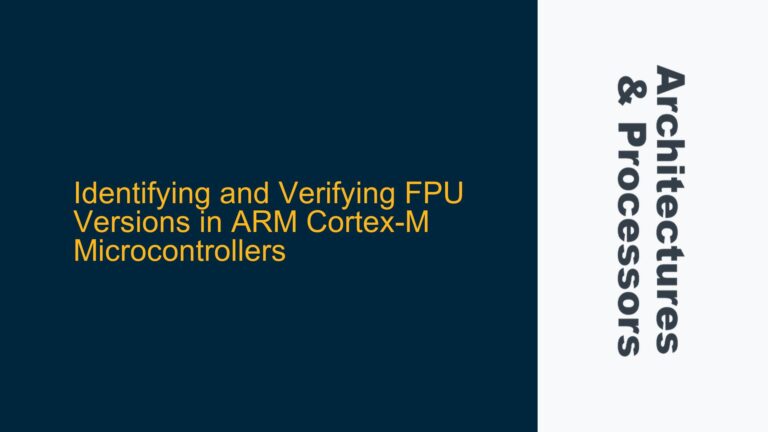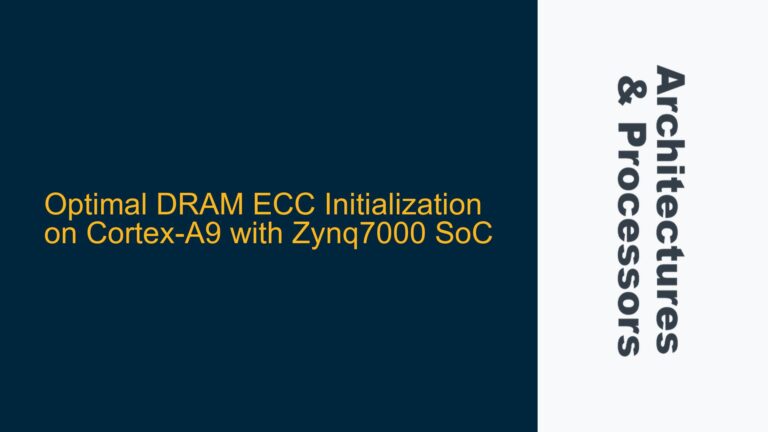PL080 DMA Controller FIFO Functionality and Performance Impact
The PrimeCell® DMA Controller (PL080) is a highly configurable Direct Memory Access (DMA) controller designed for ARM-based SoCs. It features two AHB (Advanced High-performance Bus) interfaces and eight DMA channels, each capable of handling independent data transfers. One of the key architectural features of the PL080 is its internal FIFOs, which are 4 words deep per channel. These FIFOs play a critical role in optimizing data transfer efficiency, especially in multi-channel scenarios.
The primary purpose of the FIFOs is to provide temporary buffering for data during DMA transfers. This buffering allows the PL080 to perform burst reads and writes, which are significantly more efficient than single-beat transfers. When a DMA channel is configured to use the FIFOs, it can read a burst of data from the source into the FIFO and then write a burst of data from the FIFO to the destination. This approach minimizes the number of bus transactions and reduces the overall latency of the transfer.
The PL080’s dual AHB interfaces are not dedicated to specific transfer directions (read or write). Instead, they can be dynamically assigned to any channel, allowing for flexible resource allocation. This design enables the PL080 to support concurrent transfers across multiple channels, with each channel potentially using a different AHB interface for its operations. The FIFOs are essential in this context, as they allow a channel to temporarily store data while waiting for the AHB interface to become available, thereby preventing stalls and improving overall system performance.
Misconceptions About AHB Interface Dedication and FIFO Usage
A common misconception about the PL080 is that its two AHB interfaces are dedicated to specific transfer directions—one for reads and one for writes. This is not the case. The PL080’s AHB interfaces are fully configurable, and each channel can be set to use either interface for both read and write operations. The configuration is controlled by the D (Destination) and S (Source) bits in the channel control registers, which specify the AHB interface to be used for each operation.
Using both AHB interfaces for a single channel (one for reads and one for writes) might seem like an efficient way to speed up transfers. However, this approach can lead to suboptimal resource utilization, especially in multi-channel scenarios. When a channel uses both interfaces, it effectively monopolizes the available bandwidth, leaving fewer resources for other channels. This can result in increased contention and reduced overall system performance.
The intended use case for the PL080 is to leverage the FIFOs to perform burst transfers using a single AHB interface per channel. By doing so, the controller can maximize the efficiency of each interface and ensure that all channels have fair access to the available bandwidth. This approach also aligns with the PL080’s design philosophy of supporting concurrent transfers across multiple channels.
Optimizing PL080 DMA Transfers with FIFOs and AHB Interfaces
To achieve optimal performance with the PL080 DMA controller, it is essential to understand how to configure the FIFOs and AHB interfaces effectively. Here are some key considerations and steps for optimizing DMA transfers:
-
FIFO Configuration and Burst Transfers: Ensure that each channel is configured to use the FIFOs for burst transfers. This involves setting the appropriate control bits in the channel configuration registers to enable FIFO usage. By doing so, the PL080 can perform burst reads and writes, reducing the number of bus transactions and improving transfer efficiency.
-
AHB Interface Allocation: Allocate AHB interfaces to channels in a way that balances the load across both interfaces. Avoid assigning both interfaces to a single channel unless absolutely necessary. Instead, use the FIFOs to buffer data and perform burst transfers using a single interface per channel. This approach ensures that all channels have access to the available bandwidth and minimizes contention.
-
Channel Prioritization: Prioritize channels based on their transfer requirements. Channels with higher bandwidth or latency-sensitive transfers should be given higher priority to ensure that their data is transferred promptly. The PL080 supports channel prioritization through its configuration registers, allowing you to fine-tune the behavior of each channel.
-
Simulation and Performance Analysis: Use simulation tools to model the behavior of the PL080 in your specific SoC design. This will allow you to analyze the impact of different configurations on system performance and identify potential bottlenecks. Pay close attention to the utilization of the AHB interfaces and the efficiency of the FIFOs during transfers.
-
Debugging and Optimization: Monitor the performance of the PL080 during system operation and use debugging tools to identify any inefficiencies. Look for signs of contention on the AHB interfaces or underutilization of the FIFOs. Adjust the configuration as needed to optimize performance and ensure that all channels are operating efficiently.
By following these steps, you can maximize the performance of the PL080 DMA controller in your ARM-based SoC design. The key is to leverage the FIFOs and AHB interfaces in a way that balances the needs of all channels and ensures efficient data transfer across the system.
Advanced Considerations for PL080 DMA Controller Design
When designing an SoC with the PL080 DMA controller, there are several advanced considerations to keep in mind to ensure optimal performance and reliability:
-
Cross-Domain Synchronization: In systems with multiple clock domains, ensure that proper synchronization mechanisms are in place to handle data transfers between domains. The PL080’s FIFOs can help mitigate synchronization issues by providing a buffer for data as it crosses clock boundaries. However, additional synchronization logic may be required to ensure data integrity.
-
Power Management: Consider the impact of power management on DMA transfers. The PL080 supports low-power modes, but these modes may affect the availability of the AHB interfaces and the operation of the FIFOs. Ensure that the power management strategy for your SoC takes into account the needs of the DMA controller and its channels.
-
Error Handling and Recovery: Implement robust error handling and recovery mechanisms for the PL080. This includes detecting and handling bus errors, FIFO overflows, and other potential issues that could disrupt DMA transfers. The PL080 provides status registers that can be used to monitor the health of each channel and take corrective action as needed.
-
Integration with Other IP Blocks: Ensure that the PL080 is properly integrated with other IP blocks in your SoC, such as memory controllers, peripherals, and processors. Pay attention to the timing and bandwidth requirements of these blocks and configure the PL080 to meet these requirements. This may involve adjusting the FIFO depth, AHB interface allocation, or channel prioritization.
-
Verification and Testing: Thoroughly verify and test the PL080 in your SoC design. This includes functional verification to ensure that the controller operates correctly under all conditions, as well as performance testing to validate the efficiency of the FIFOs and AHB interfaces. Use a combination of simulation, emulation, and hardware testing to achieve comprehensive coverage.
By addressing these advanced considerations, you can ensure that the PL080 DMA controller is fully optimized for your ARM-based SoC design. This will result in a system that delivers high performance, reliability, and efficiency, meeting the demands of even the most complex applications.
Conclusion
The PL080 DMA controller’s internal FIFOs and dual AHB interfaces are powerful features that, when properly configured, can significantly enhance the performance of ARM-based SoCs. By understanding the role of the FIFOs in enabling burst transfers and the flexibility of the AHB interfaces, designers can optimize DMA operations to achieve efficient data movement across the system. Careful consideration of channel prioritization, simulation, and advanced design considerations will further ensure that the PL080 operates at its full potential, delivering the performance and reliability required for modern SoC designs.






